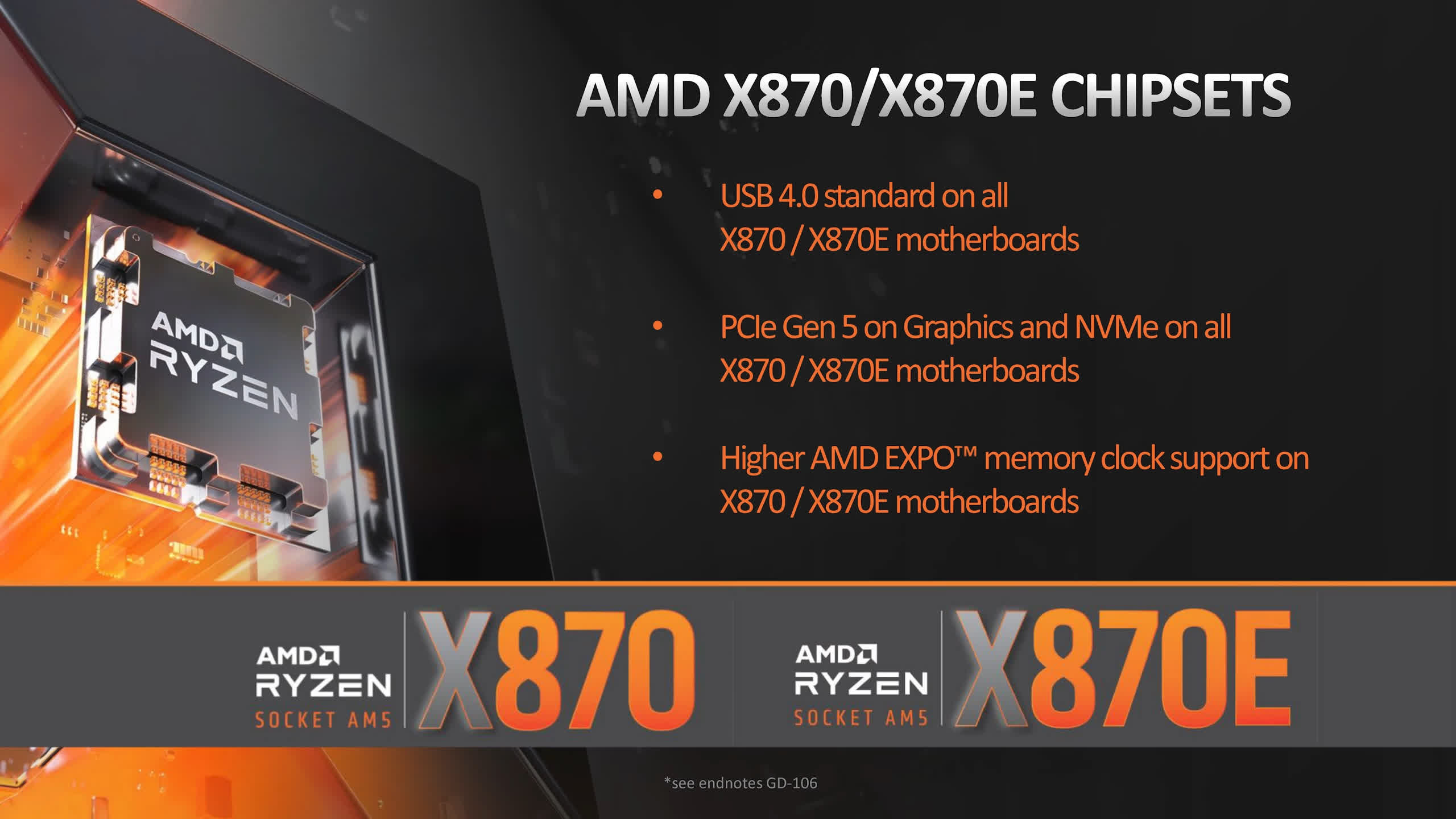In brief: As manufacturers exhibit next-generation motherboards at Gamescom 2024, the roadmap for AMD's upcoming 800-series chipset is becoming clear. Ryzen 9000 early adopters will likely have to use the new CPUs with 600-series boards for now or wait a while and splurge on the newest high-end X800 models later this year.
After interviewing motherboard manufacturers at Gamescom 2024, ComputerBase reports that AMD's next lineup of mid-range chipsets likely won't begin shipping until next year. B850 and B840 models might appear at CES 2025.
Vendors such as Asus have prepared Gamescom showcases for new flagship X870 and X870E motherboards, which are expected to arrive in September. Full specifications for Asus' ROG Crosshair, ROG Strix, TUF Gaming, ProArt, and Prime variants are now available.
Click to enlarge
The cheaper B850 and B840 are largely absent from the event, indicating they are scheduled to launch at a later date. The X800 and B800 tiers are designed for AMD's recently released Zen 5 Ryzen 9000 desktop CPUs. However, customers wishing to upgrade to the new processors can also use older 600-series motherboards since they support the same AM5 socket, though they might require BIOS firmware updates.
Upgrading from X600 to X800 offers a few notable advantages. All X870 motherboards will support 40Gbps USB 4.0 connections. Furthermore, users gain simultaneous access to PCIe 5 lanes for NVMe SSDs and dedicated graphics cards without spending extra money on the extreme model.
GPUs supporting PCIe 5.0 haven't appeared yet, but upcoming lineups like AMD's RDNA4, Nvidia's RTX 5000 Blackwell, and Intel's Battlemage are expected to support the feature. The latest information indicates that the three manufacturers will debut their next-generation GPUs in late 2024 or early 2025, possibly alongside AMD's more affordable B800 motherboard chipset.
Some B850 products might include enough PCIe 5.0 lanes for SSDs and graphics cards, but many will relegate GPUs to PCIe 4.0 like most currently available motherboards. Furthermore, the B850 only mandates USB support up to 20Gbps 3.2 connections. Meanwhile, B840 only requires PCIe 3.0 lanes and 10Gbps USB 3.2 ports, suggesting that it might be a successor to the ultra-budget A620. Users shopping for mid-range AM5 boards next year should carefully compare specs for B800 and B600 offerings, as their differences aren't dramatic.
AMD B850 and B840 chipsets are delayed, might debut in early 2025

